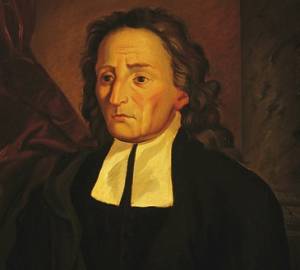Social Cycle Theory
Social cycle theories are among the earliest social theories in sociology. Unlike the theory of social evolutionism, which views the evolution of society and human history as progressing in some new, unique direction(s), sociological cycle theory argues that events and stages of society and history are generally repeating themselves in cycles. Such a theory does not necessarily imply that there cannot be any social progress. In the early theory of ancient Chinese historian Sima Qian and the more recent theories of long-term (‘secular’) political-demographic cycles as well as in the Varnic theory of 20th century Indian philosopher P.R. Sarkar an explicit accounting is made of social progress. The interpretation of history as repeating cycles of Dark and Golden Ages was a common belief among ancient cultures. The more limited cyclical view of history defined as repeating cycles of events was put forward in the academic world in the 19th century in historiosophy (a branch of historiography) and is a concept that falls under the category of sociology. However, Polybius, Ibn Khaldun, and Giambattista Vico can be seen as precursors of this analysis. The Saeculum (a length of time roughly equal to the potential lifetime of a person or the equivalent of the complete renewal of a human population) was identified in Roman times.
Russian philosopher Nikolai Danilewski (1822–1885) differentiated between various smaller civilizations (Egyptian, Chinese, Persian, Greek, Roman, German, and Slav, among others). He wrote that each civilization has a life cycle, and by the end of the 19th century the Roman-German civilization was in decline, while the Slav civilization was approaching its Golden Age. A similar theory was put forward by German historian Oswald Spengler who in his ‘Der Untergang des Abendlandes’ (‘The Decline of the West,’ 1918) also expected that Western civilization was about to collapse. The first social cycle theory in sociology was created by Italian sociologist and economist Vilfredo Pareto in his ‘Trattato di Sociologia Generale’ (‘The mind and society,’ 1916). He centered his theory on the concept of an elite social class, which he divided into cunning ‘foxes’ and violent ‘lions.’ In his view of society, the power constantly passes from the ‘foxes’ to the ‘lions’ and vice versa. Sociological cycle theory was also developed by Russian American sociologist Pitirim A. Sorokin in his ‘Social and Cultural Dynamics’ (1937, 1943). He classified societies according to their ‘cultural mentality,’ which can be ideational (reality is spiritual), sensate (reality is material), or idealistic (a synthesis of the two). He interpreted the contemporary West as a sensate civilization dedicated to technological progress and prophesied its fall into decadence and the emergence of a new ideational or idealistic era.
One of the most important recent findings in the study of the long-term dynamic social processes was the discovery of the political-demographic cycles as a basic feature of the dynamics of complex agrarian systems. The presence of political-demographic cycles in the pre-modern history of Europe and China, and in chiefdom level societies worldwide has been known for quite a long time, and already in the 1980s more or less developed mathematical models of demographic cycles started to be produced (first of all for Chinese ‘dynastic cycles’ in 1989). Such models demonstrate that sociodemographic cycles were a basic feature of complex agrarian systems (and not a specifically Chinese or European phenomenon).
The basic logic of these models is as follows: After the population reaches the ceiling of the carrying capacity of land, its growth rate declines toward near-zero values. The system experiences significant stress with decline in the living standards of the common population, increasing the severity of famines, growing rebellions etc. Most complex agrarian systems had considerable reserves for stability, however, within 50–150 years these reserves were usually exhausted and the system experienced a demographic collapse (a Malthusian catastrophe), when increasingly severe famines, epidemics, increasing internal warfare and other disasters led to a considerable decline of population. As a result of this collapse, free resources became available, per capita production and consumption considerably increased, the population growth resumed and a new sociodemographic cycle started.
Anonymous. “Social Cycle Theory.” 02/05/2013. <http://thedailyomnivore.net/2013/02/05/social-cycle-theory/>.
